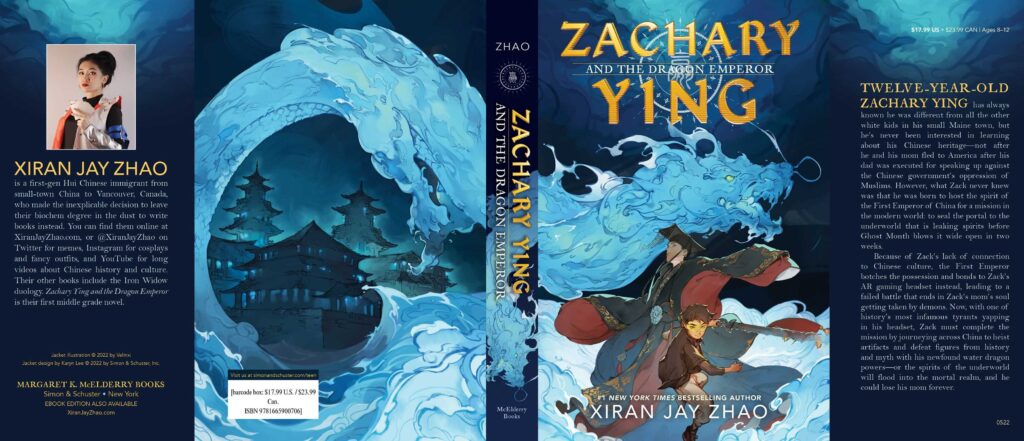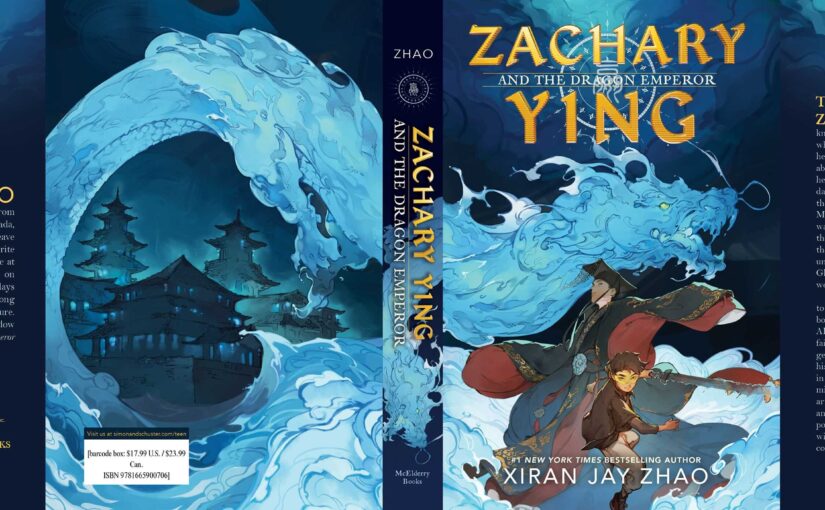I taught ESL to Chinese students for two years. This is important because it introduced me to more Chinese myths than the average middle-grade reader. Zachary Ying and the Dragon Emperor by Xiran Jay Zhao has the goal of building a book series that’s aimed at middle school readers.

Zach is a kid who didn’t learn much about his Chinese ancestors because he lives in the west with his mom. He doesn’t remember his dad, but he thinks about him often. However, he’s also a regular kid and they’re socializing through video games and the most popular one at his school is Mythrealm. It’s a game that requires a VR headset and has battles with popular mythical characters around the world.
As their avatars compete in the game, any potential friends or foes briefly has a floating card that introduces them. It has their power, basic history and lets you know a bit about them. One day while playing the game with friends Zach is approached by a character who offers him power. Zach, thinking that this is a power-up situation agrees, but it’s actually a spirit who is looking for a physical host.
The spirit is Ying Zheng, the first emperor of China, but unfortunately, the spirit melds with Zach’s VR headset, and not the physical being. This leads to all manner of complications and provides the thrust for almost all of the action in Zachary Ying.
Zheng’s quest takes Zach to China where he starts to realize that this journey is for the survival of his ancestral home. If he doesn’t seal a leak between worlds then all manner of spirits will roam wild.
There is so much that could’ve gone right in Zachary Ying and the Dragon Emperor. It channels The Last Starfighter with Avatar and Percy Jackson, all of which are elements that kids would love to read about. However, as a book, Zachary Ying and the Dragon Emperor has too many ingredients, on too many levels to make it a fun book to read.
For example, Zach has two friends, who also have had ancient Chinese spirits attach themselves to their physical beings. In many instances in the book a couple of these spirits have conversations with each other and end up telling tales of their glory days. In those cases, it’s a story that’s three people deep, while talking about battles, cultural happenings or things that happened in ancient China thousands of years ago.
A close approximation would be if George Washington and Alexander Graham Bell possessed someone and then started bickering about something relevant to them back in their timeline. The end result is that Zach’s conversation with Zeng takes too deep of a dive into Chinese history. Instead of it being an enjoyable mglit book for middle school students it comes off as history, with a side of adventure and avatar play.
It’s a book that has all of the elements that those middle school ages want to read, but it throws far too much into the mix for it to be an enjoyable book. The elements in Zachary Ying have two sides to them, with the chapter’s headlines taking on the glib western atmosphere, and the chapters themselves taking a deep dive into Chinese mythology. How to Scam the Ancient Chinese Justice League is chapter 14 in the book. It’s when Zach is battling some Daoist immortals who are standing in their way of completing the mission. The former being the way that a surly teen would interpret them and the latter being how his mom, or someone who is more familiar with Chinese myths would explain them.
The book also reads like it’s more interested in setting up additional books, than producing one that can be really interesting to mass markets. That fact is further hammered home when it ends on a cliffhanger. It’s an ending that some will stick around for, but I’d gather that most audiences would’ve checked out by then or won’t care to see what happens in the second book.
Zachary Ying and the Dragon Emperor is by New York Times Best Selling author Xiran Jay Zhao and available on Margaret K. McElderry Books, an imprint of Simon & Schuster.
There are affiliate links in this post.





 Facebook
Facebook Twitter
Twitter Flickr
Flickr GooglePlus
GooglePlus Youtube
Youtube